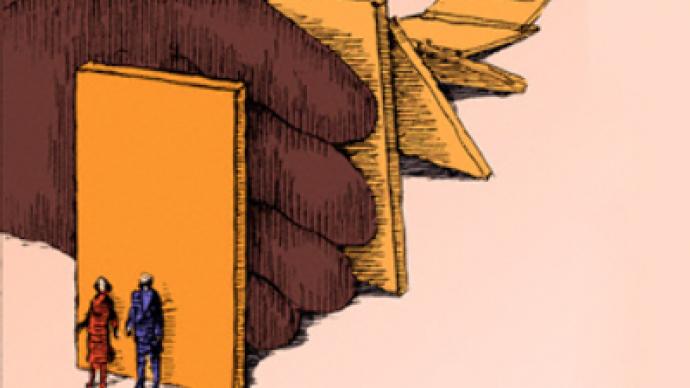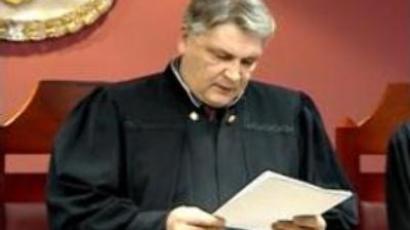Putin’s plan – a strong democratic hand

Five years ago, Vladimir Putin announced a reform of election law. This elapsed period allows us to make the first conclusions about the effectiveness of the reforms and also have a deeper look at the motives for them.
On September 13, 2004, Russian political development took a sharp new turn – then-President Vladimir Putin announced that special measures would be taken to enforce the fight against terrorism and to centralize power in the country. With a number of decrees, Putin abolished gubernatorial elections in the Russian regions and ordered that top regional officials must be appointed by the President and approved by local legislatures (with the President having the right to dissolve a legislature after two consecutive refusals to approve a candidate favored by the Kremlin).
The Russian press generally saw (and continues to see) the move as a reply to the school siege in the southern Russian city of Beslan in 2003. Foreign political analysts and Putin’s opponents at home called the reform a blow to the young Russian democracy. Here I would like to have a closer look at both points.
The hostage taking in the School No. 1 in the North Ossetian town of Beslan took place on September 1. A group of terrorists held over 1000 people hostage demanding the withdrawal of federal troops from Chechnya and the release of Chechen militants detained in previous clashes. Three days later, Russian Special Forces commenced an operation to free the hostages, killing all but one of the terrorists. Unfortunately, over 350 civilians were also killed, making the Beslan school siege the worst terrorist attack in modern Russian history. However, while it is obvious that Beslan was a trigger for Putin’s reforms, it is important to understand the overall state of security in Russia at the time.
In May 2004, a bomb planted in the concrete pillars of a stadium killed the pro-Kremlin Chechen President Akhmad Kadyrov and about 30 other people. In June, a large group of militants attacked the Russian republic of Ingushetia, killing about 100 people. In August, Chechen suicide bombers detonated explosives on board of two Russian passenger aircraft, killing 43 and 46 people. Also in August, a bomb exploded near a metro station in Moscow, killing 10.
It is clear that the situation all over the country was extremely tense (although the situation in 1995 and 1996 was possibly even worse, with Chechen terrorists staging attacks and hostage takings not only in Russia, but also abroad). Thus, the solution to the problem had to be sought on a nationwide scale, which was proposed.
We should also remember that 2004 was the year when Putin was elected for his second presidential term. The re-election showed Putin’s extreme popularity, but it also showed that voters liked Putin’s personality and his way of decision making, not the rather vague program that he offered (several years later, when the pro-Kremlin United Russia heavily used the term “Putin’s plan” in its election campaign, it became very clear that there was no plan as such, but rather a general line Putin had chosen for development). But such a scale of nationwide belief in Putin’s personality also meant a great deal of personal responsibility. And personal responsibility is something which is very difficult to share, especially when one cannot choose the people to share it with.
On the other hand, the move was of course a blow to democracy, but not exactly as Putin’s critics see it, i.e. the president grabbing all power he could get, rather in a more indirect way. Putin’s reforms were giving in to the age-old tendencies of the majority of Russian population to rely on a central power, preferably personified by a single man. Regional elections gave the country local leaders who were less dependent on Moscow, but they also provided Russians with basic training in politics and showed how democracy could immediately affect one’s life. But by voting for Putin’s second term, Russians made it understood that they preferred someone else to take responsibility, especially when the decisions were difficult. And as we saw before, the situation in 2004 required tough decisions.
Another thing which is often overlooked is that, along with the changes in regional elections, Putin proposed an unquestionably democratic move – to set up a Public Chamber with the President. This is a special advisory body comprised of 126 people from political, public, cultural and religious organizations. Thus, by taking more responsibility, the President also promised that the decisions would be more evenly-weighted and that the public’s wishes and hopes would be delivered to him, even though he personally appointed one third of the members of the chamber and the appointees in turn elected the other two thirds.
If the intervening years since the reforms were enacted show anything, it’s that the Russian people are not, on the whole, terribly fazed by the alleged removal of certain democratic opportunities, namely the right to vote for their governors. The popularity of the previous and current administrations remains at levels most other countries’ leaders could only dream of. Russians approve of these measures.
Moreover, to judge the effectiveness of the reforms themselves, we should look at the current situation in the country. We see that the number of terrorist attacks has decreased and also that, instead of blasts and hostage-takings targeted against civilians, terrorists choose government and law enforcement officials as their victims, thus showing that Moscow is choosing the right people for the task, after all.
Kirill Bessonov, RT













